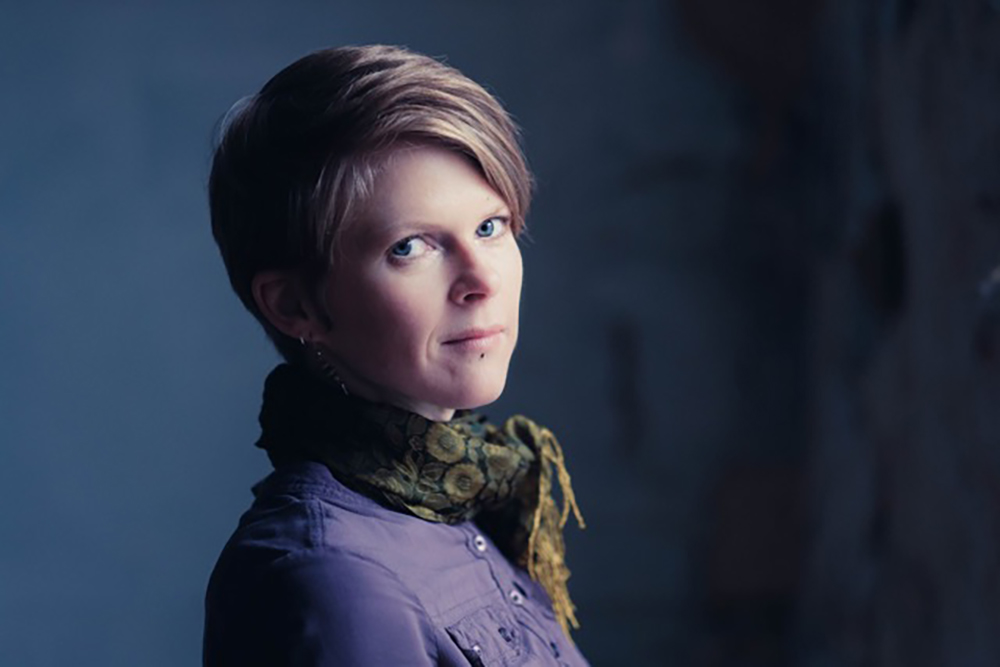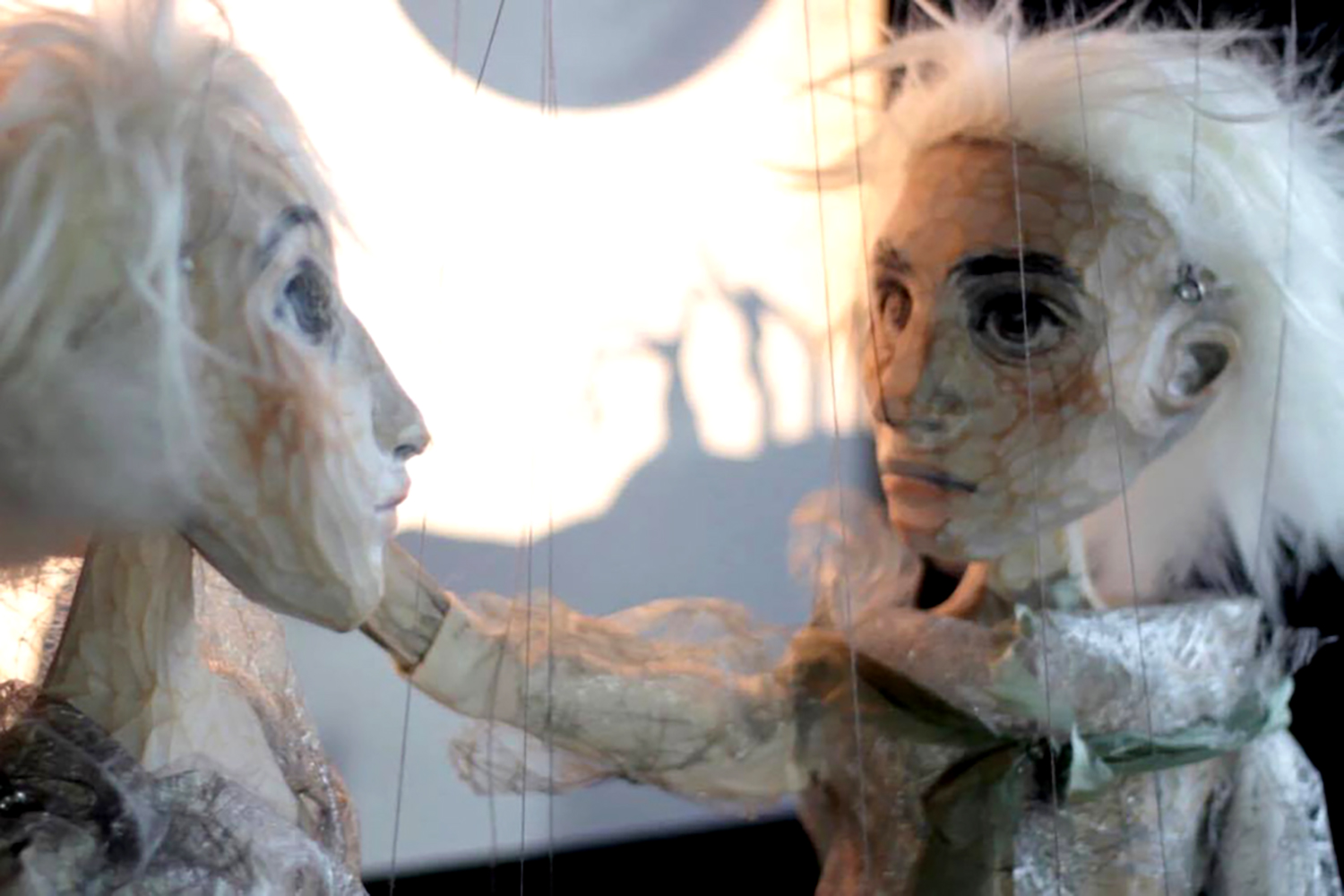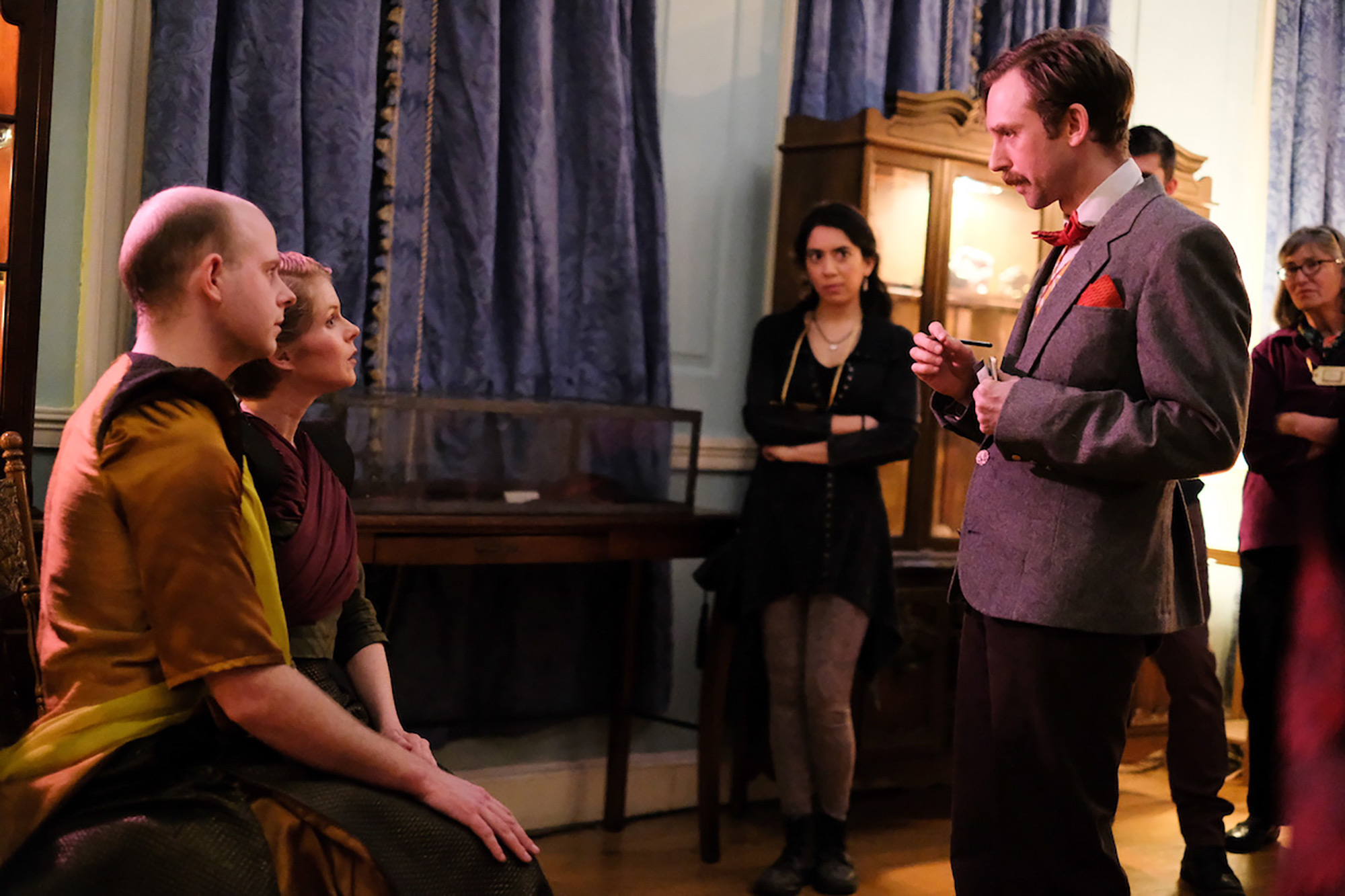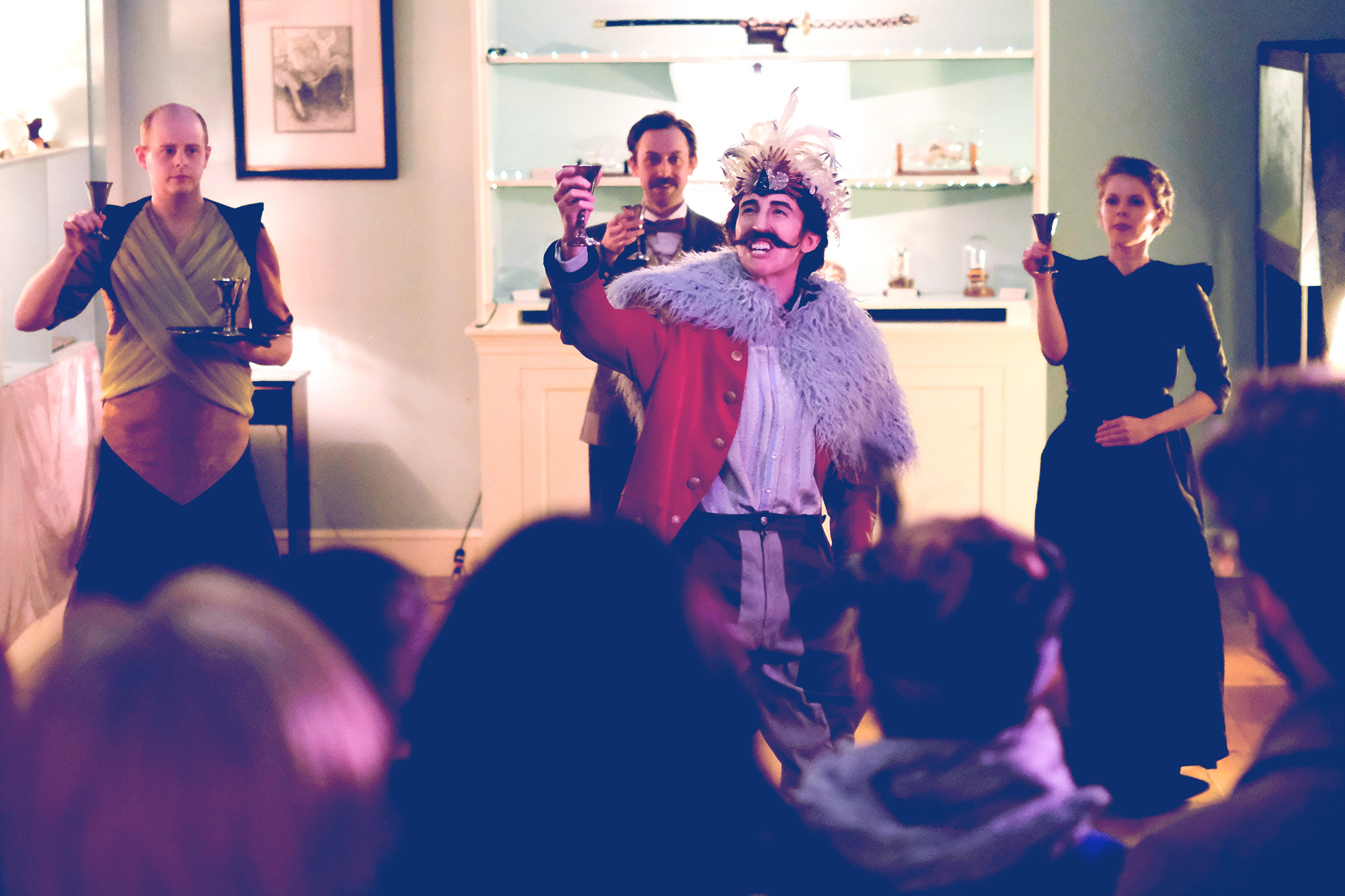In the summer of 1814, Baltimore’s Peale Museum opened its doors as the first purpose-built museum in the United States, revealing wonders like the skeleton of a mastodon discovered by the founder’s father, Charles Willson Peale.
More than 200 years later, visitors to the same building are being treated to an entirely new – and fantastically fictional – set of wonders. Baltimore resident and University of Virginia alumna Lisi Stoessel and her cast and crew have created an immersive theater experience spanning all four floors of the historic building.
The production, called “H.T. Darling’s Incredible Musaeum Presents: The Treasure of the New Galapagos, Astonishing Acquisitions from the Perisphere,” is co-directed by Stoessel – who first conceived the idea in 2014 and serves as both a co-director and actor – and her partners at Submersive Productions, an immersive theater group. It is part of the city’s efforts to revive the historic Peale Center, which went through many owners and uses before being left vacant in 1997.

UVA alumna Lisi Stoessel is the co-director of an immersive theater project drawing rave reviews and new audiences to Baltimore’s historic Peale Center. (Photos by Glenn Ricci)
The play’s story centers on a fictional explorer, H.T. Darling – played by Sarah Olmstead Thomas – who has just returned from exploring an alien planet, the New Galapagos. The museum houses the fruits of his exhibition, including rock specimens, futuristic art, taxidermied animals and even a mysterious humanoid creature – all created or enacted by Stoessel, the Submersive Productions team and a network of local artists.
“The aesthetic is very Belle Époque, turn of the century, including the building itself, but there is also this element of space exploration that recalls early science fiction novels,” said Stoessel, who earned both her undergraduate degree in studio art and her master’s degree in scenic design from UVA. “We did not want to tie it to a particular period, because we wanted the flexibility to do creative, fantastical things.”
That creativity is evident right away, as visitors choose a fictional identity, casting them as high-society donors to the museum. Once inside, they can roam freely, examine the artifacts and exhibits, interact with the cast and watch multiple storylines play out, involving both human actors and puppets.

Stoessel called puppetry a “through line” in her art since her time at UVA.
Some actors might draw one or two people away for miniature one-on-one scenes, perhaps asking them for jokes or opinions that they will work into the show later.
“In the current realm of immersive theater, shows are often very serious,” Stoessel said. “Our show has a lot that is serious, but we also don’t take ourselves too seriously. There are a lot of comedic elements.”
Both the show’s humor and its serious moments are designed to get audiences thinking about the complications that come with removing objects or creatures from one culture to display them for another.
“We are kind of poking fun at older, more patriarchal systems, which is why we cast a woman as this very masculine explorer, who brought back amazing artifacts, but also plundered a planet and even caused some species to go extinct,” Stoessel said. “Our play is questioning these old values that a lot of museums stand for, while at the same time celebrating what they stand for in other ways.”

Audience members can roam the four floors of the museum, listening in on characters’ conversations or even taking part in scenes.
The audience members are not passive spectators in the display. They have very real roles to play and can change the performance, Stoessel said.
“More than typical theater, the audience really affects your performance. It’s like a secondary character,” Stoessel said. “Each night the audience has a different personality.”
So far, audiences and critics alike have loved the experience. The company has extended the show’s run for several weeks, until May 14, and local theater critics have called it “a fascinating theatrical experience,” a “rich phantasmagorical journey to a planet of wonders” and even “the most unusual and unique experience of a lifetime.”
For Stoessel, it is the fulfillment of a dream.
“As a designer, I have been interested in immersive theater for a very long time. I even wrote my thesis at UVA on site-specific performance,” she said. “I think it is the essence of why we do theater, because it is interactive and not an experience you can duplicate on a screen.”
Media Contact
Article Information
April 21, 2017
/content/alumnas-fantastical-show-breathes-new-life-americas-first-museum

